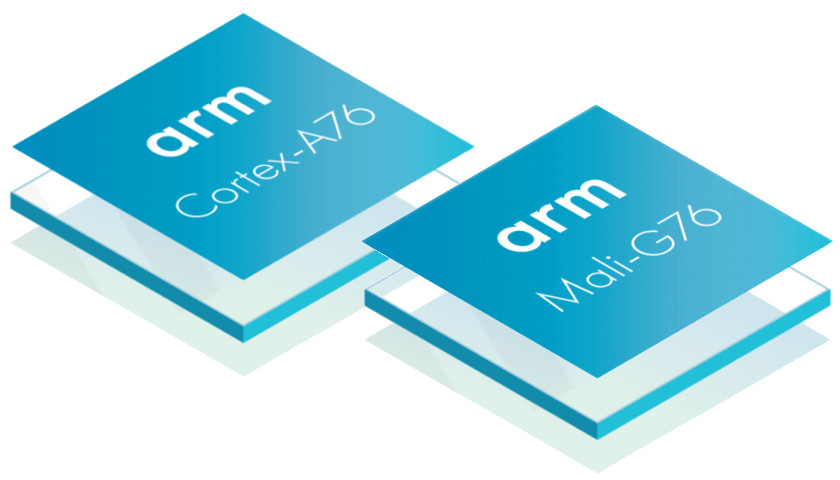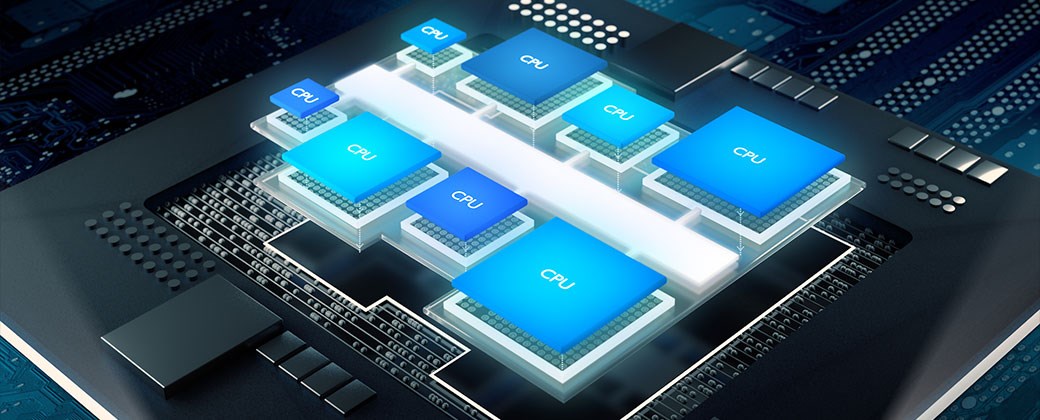
Three major smartphone SoC designers have now detailed their next-generation designs, which will power smartphones throughout 2019. Huawei was first with its Kirin 980, already powering the Huawei Mate 20 series. Samsung followed, announcing its Exynos 9820. Now Qualcomm’s just announced the Snapdragon 855.
As usual, a selection of performance improvements are on offer in both the CPU and GPU department. There’s also a continued focus on “AI” processing capabilities and faster 4G LTE connectivity, but no out-of-the-box 5G chip on the market just yet. If you’re thinking about an expensive smartphone purchase next year, here’s everything you need to know about the chipsets that will power them.
Spec overview
| Snapdragon 855 | Exynos 9820 | Kirin 980 | |
|---|---|---|---|
| CPU Core | Semi-custom ARM Cortex - Kryo 485 | Fully-custom ARM Cortex | ARM Cortex |
| CPU Config | 1x Cortex A76 @ 2.84GHz 3x Cortex-A76 @ 2.42GHz 4x Cortex-A55 @ 1.8GHz |
2x 4th gen custom 2x Cortex-A75 4x Cortex-A55 |
2x Cortex-A76 @ 2.6GHz 2x Cortex-A76 @ 1.92GHz 4x Cortex-A55 @ 1.8GHz |
| GPU | Adreno 640 | Mali-G76 MP12 | Mali-G76 MP10 |
| AI | Hexagon 690 | NPU | Dual NPU |
| Memory | UFS 3.0 | UFS 3.0 | UFS 2.1 |
| Process | 7nm FinFET | 8nm FinFET | 7nm FinFET |
| Video capture | 4K UHD, HDR @ 60fps | 8K @ 30fps or 4K @ 150fps | 4K @ 30fps |
| Video playback | 8K UHD, 360 degree, up to 120fps, 10-bit, H.265 and VP9 video decoder |
8K 30fps or 4K 150fps, 10-bit HEVC(H.265), H.264, VP9 |
4K @ 60fps |
| Modem | X24 LTE 2000 Mbps down 316 Mbps up |
Cat 20 LTE modem 2000 Mbps down 316 Mbps up |
Cat 21 LTE modem 1400 Mbps down 200 Mbps up |
These high-performance chips are all moving on to newer technologies across the board. There are the latest Arm and custom CPU designs, newer GPU components, beefed up machine learning silicon, and faster LTE modems. Samsung and Qualcomm are leading the industry here with 2Gbps LTE chips sporting mass carrier aggregation technologies, which should offer connectivity improvements at the cell edge and in dense areas over the Kirin 980. Multimedia support continues to push ahead too, with HDR and even 8K content support appearing in both the Exynos and Snapdragon chips, and hardware support for H.265 and VP9 codecs for better efficiency.
Notably, 5G modems are absent from all three of these next-gen chips, which might seem odd given the push some carriers and manufacturers are making for 5G in 2019. However, all three of the chips support 5G via external modems, making it an optional extra for those devices introducing support early.
Huawei and Qualcomm are now on TSMC's 7nm, while Samsung is close behind on its own 8nm process.
Much more fuss has been made about the race to 7nm. Huawei made this a key part of its Kirin 980 announcement, which prompted Qualcomm to state it would build its next-gen chip on TSMC’s 7nm process too. The mobile industry is already quickly moving on from 10nm in its pursuit of power efficiency and smaller silicon footprints. For us consumers, 7nm chips should mean longer battery life and higher performing devices.
Samsung’s use of its in-house 8nm node suggests its own 7nm technology isn’t quite ready for mass production. Samsung expects a modest 10 percent power consumption improvement between its 10nm and 8nm processes. Meanwhile, TSMC boasts a 30 to 40 percent improvement with its own move from 10 to 7nm — clearly much better if accurate. Of course, other factors will determine final power consumption, but Samsung’s chip could well be slightly disadvantaged here.
Tri-cluster CPU designs go mainstream
Smartphone SoC CPU designs are currently more interesting and diverse than they’ve been in a long time. Today’s octa-core are striving for innovative, more efficient cluster designs consisting of more diverse and heavily customized CPU cores than ever before. big.LITTLE has given way to big, middle, little, with Cortex-A76, A75, A55, and Samsung continues to throw a heavily custom design into the mix.
2+2+4 CPU clusters with a shared L3 cache are the staples of Huawei and Samsung’s design. This transition away from a 4+4 design is to a tri-cluster is more optimal for sustained peak performance in a smartphone form factor and should also improve energy efficiency. The Snapdragon 855 takes this philosophy one step further, with a 1+3+4 CPU design. The “prime” core in the Snapdragon 855 boasts double the L2 cache and a higher clock speed than the three other big cores, making it the heavy lifter when peak single thread performance is required.
Huawei and Samsung opted for 2+2+4 CPU designs, while Qualcomm has gone for 1+3+4. All three are aiming for higher, more sustainable performance.
While Qualcomm and Huawei stick to Cortex-A76 cores in the big and middle sections, Samsung opts for the older Cortex-A75, likely to save on silicon size, and potentially heat. This will help make up for the gargantuan custom CPU cores and also allow for some extra GPU cores compared to the Kirin. Samsung implemented its own DynamIQ type cluster management system, as Arm doesn’t license out its DynamIQ shared unit tech for use with custom core designs, so we’ll have to wait to see how all of these designs handle task scheduling.
The other big question for this upcoming generation is whether Samsung’s fourth generation custom CPU design is more powerful and as power efficient as the Arm Cortex-A76, which forms the basis of the Kirin 980 and is tweaked in the Snapdragon 855. The third generation M3 core wasn’t as good as Qualcomm’s tweaked Cortex-A75 inside the Snapdragon 845 in both regards, and Samsung’s own 20 percent performance boost and 40 percent efficiency projections might not be quite enough to level the playing field.
Meanwhile, we’ve already seen the Kirin 980 excels at both single and multi-core CPU performance, firmly trouncing current generation products. There are some major design differences with the Snapdragon 855, but the potential of the Cortex-A76 certainly looks impressive. Overall, I’m expecting the Snapdragon 855’s design to have a slightly higher peak single thread performance, but multitasking and general application performance is much harder to call.

Gaming hits another gear
With mobile gaming continues to grab a major share of the global market, there’s good news to be found in this latest round of high-performance SoCs. Both the Samsung Exynos 9820 and Kirin 980 use the latest Arm Mali-G76 GPU, which will push gaming performance up a major notch.
While the Kirin 980 uses a 10-core configuration, roughly equivalent to a 20-core Mali-G72, the Exynos 9820 offers extra performance with a 12-core Mali-G76 implementation. Samsung’s chipset should be the better performer for gamers, but we’ll have to wait for a side by side comparison to know by exactly how much.
This implementation will likely only close the gap with current generation Adreno graphics. Our hands-on with the Kirin 980 confirms that gaming performance in the ballpark of current Snapdragon 845 phones, sometimes slightly ahead, sometimes behind, but never breaking away. The Snapdragon 855 promises to add an extra 20 percent over the current generation, which should keep its nose notably out in front throughout 2019.
In summary, we’re almost certainly looking at Snapdragon 855 handsets offering the best gaming performance next year, followed by the Exynos 9820, and then the Kirin 980. Although all of these SoCs will be more than fast enough for a decent experience on all high-end mobile titles.
AI improvements
Machine learning, or AI as some people call it, has also seen a big performance boost across all of these SoCs too. For the first time, Samsung is supporting dedicated machine learning hardware inside its SoC with a neural processing unit (NPU) offering up to a 7x performance boost compared to the Exynos 9810. Huawei has doubled up on NPU silicon inside the Kirin 980, which certainly extends the company’s already impressive “AI” capabilities.
Qualcomm’s Snapdragon has long supported machine learning tasks, via a heterogeneous mix of CPU, GPU, and DSP rather than with specific machine learning hardware. Its DSP is designed for fast math and has introduced extensions for specific operations, but it’s never been a dedicated machine learning design.
Mass matrix tensor math is now supported in hardware across all three of these flagship SoCs.
This generation, Qualcomm seems to have settled on the type of extra hardware it wants to boost machine learning performance. The introduction of a Tensor processor to the Hexagon 960 should really help to accelerate the Snapdragon 855’s performance in a range of applications.
AI performance is notoriously tricky to measure because it’s heavily dependent on the type of algorithms you’re running, the data type used, and the specific capabilities of the chip. The industry seems to have settled on dot product, mass matrix multiple/multiply accumulate as the most common case to accelerate, and all three of the chips offer a big boost to performance and energy efficiency to this type of application.
For consumers, that means faster and more battery efficient face and object recognition, on-device voice transcription, superior image processing, and other “AI” applications.

Which will be the fastest?
We don’t want to assume too much without hands-on time with devices, but we can already make a few assumptions based on the specifications.
CPU wise, the Snapdragon 855 will likely push the performance envelope the most, owing to its extreme CPU core setup and slightly higher clock speeds. It takes what Huawei has already accomplished with the Kirin 980 and pushes the idea to even higher extremes.
Samsung’s Exynos 9820 is a little tougher to judge, owing to its custom CPU core, in-house core cluster system, and 8nm rather than 7nm process. It’ll be fast, but we’ll have to wait for devices to judge just how well Samsung’s custom CPU stacks up.
Feature-wise, Qualcomm throws as many extras into its SoC as you could want. Super fast LTE, 5G support if you want it, fast charging, I’m not entirely convinced 8K video support is really anything smartphones will need anytime soon, but we also have higher frame rates for lower resolutions, which is great. Samsung’s Exynos packs in a similar array of features and a blazing fast LTE modem. The Kirin 980 has you pretty well covered too, and all can support 5G modems for high-end 2019 smartphones.
For gamers, Qualcomm’s Adreno 640 graphics core will likely continue to lead the field. For most applications, Arm’s Mali-G76 is more than fast enough, but those looking for extreme, top of the line performance may want to opt for a Snapdragon-powered handset next year.
Overall, all of these chips look very impressive and will push performance, and more importantly energy efficiency up another level. The move to 7nm, or 8nm in Samsung’s case, is good news for battery life, if nothing else. Furthermore, we’re entering an era of unique and interesting CPU cluster designs and machine learning capabilities. Smartphone SoC technology continues to innovate at an impressive rate.
from Android Authority https://ift.tt/2BVfKyF



No comments:
Post a Comment